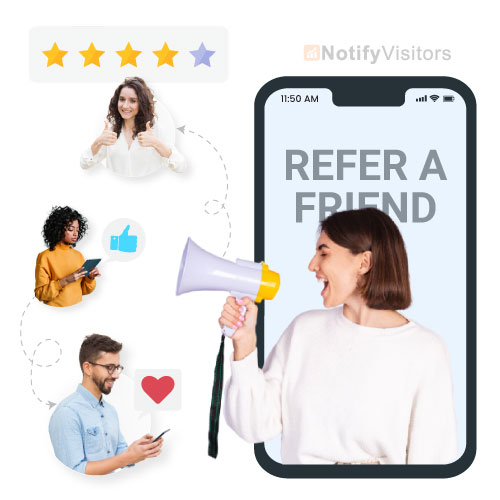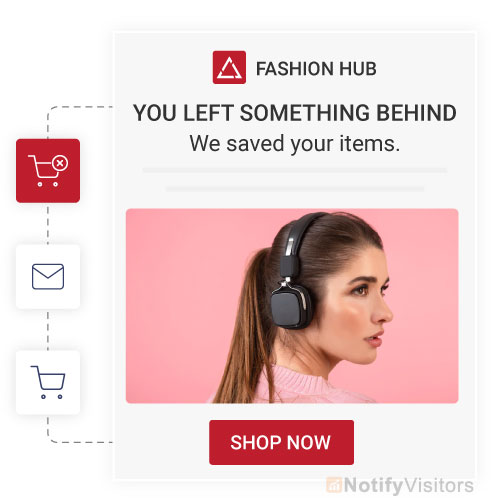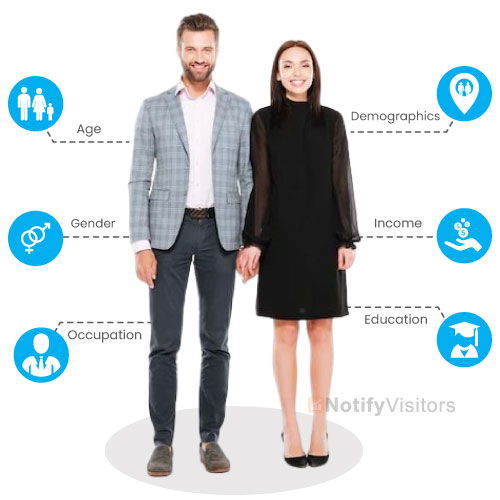With email marketing continuing to be a key source of acquiring and retaining customers, advanced segmentation techniques help businesses better target their audiences. For example, you can create distinct customer segments based on buyer behavior and purchase history to engage their more successful campaigns.
But which email segmentation ideas should you use? Here we will discuss 19 of the best email segmentation ideas to boost your conversions in 2025 — from building dynamic rules-based segments to using IP-based segmentations.
By implementing these ideas, you’ll increase engagement rates and drive higher revenues for your business. So let’s get started.
Contents
What is Email Segmentation?
Email segmentation is a powerful marketing strategy that allows companies to tailor their messages and promotions to smaller, targeted audiences. It is a valuable tool for creating more effective, personalized communications with customers and potential customers.
Through segmenting email lists based on specific factors like purchase behavior and user preferences, marketers can create highly targeted messages that fit the needs of each customer.
Additionally, segmented emails result in higher open and engagement rates than non-segmented emails. By using this tactic wisely, businesses are empowered to deliver highly personalized experiences via email to their customers, which can help build customer trust and loyalty and increase overall conversions.
Best Email Segmentation Ideas to Boost Conversion
1. Customers Who Refer

Segmenting customers who refer is one of the great email segmentation ideas. In this idea, you can segment those customers who repeatedly refer new business your way. These are your biggest brand advocates.
Therefore, you should send emails targeted towards loyalty programs, refer-a-friend discounts, and even trials for new products or services you’re launching to get honest feedback before widespread rollouts.
2. Preferences
Research indicates that over 50% of email marketers and businesses need to permit their subscribers to choose the types of emails they like to receive. Therefore, never stop asking your customers their preferences.
Even if you have segmented subscribers based on the opt-in form, lead magnet, and content interests, it is still important to ask them how frequently they’d like to receive emails, what type of emails they’d like to read, when they’d like to get them, and so on.
The more information you gain from them, the more optimized the email campaign you can create. It will lead to a win-win situation for both you and your subscribers. They get what they want; you spend less time determining how to segment them and what to send them.
Once you get the required information, build segments accordingly.
3. Sales funnel stage
Segmenting subscribers based on their stage in the sales funnel is essential for two reasons:
- It drives sales.
- It is a must for overall marketing success.
Sales stage segmentation should specify what email subscribers will receive and when and how they should be moved to another list.
For instance, new subscribers should get introductory and how-to emails, while nurtured subscribers should receive emails prompting them to buy.
4. Seniority Level
There are diverse job roles, and there are different levels of seniority. Maybe your contact said they work in marketing, but is she the VP of marketing or a marketing coordinator? Those two contacts will vary in years of experience, salary level, pain points, decision-making potential, and many other differences that make segmentation required for compelling email marketing campaigns.
5. Location
Location-based segmentation is ideal for local businesses and brick-and-mortar stores. This email segmentation idea allows you to improve the relevance of your emails since you can incorporate location-specific ideas in your content.
For instance, you can email locals about forthcoming events in their area. You can also feature prominent non-competing brands in your area to make your emails look more organic and relatable.
6. Engagement
The subscribers’ engagement level changes over time for several reasons. Email segmentation based on subscriber engagement level helps lower unsubscribe rates and improve open rate and CTR. This kind of segmentation is different from inactive segmentation. Here you’re segmenting subscribers based on time spent on your website.
Active subscribers who are involved and show interest in your emails should be treated differently by pushing them further down the sales funnel. On the other hand, the ones losing interest in your business should be grouped so you can drive them back on the right track.
7. Cart abandonment

Cart abandonment is one of the most common issues encountered by eCommerce stores. The best way to deal with this problem is to segment your subscribers based on cart abandonment so you can reach out to them again with an email. Alternatively, you can give a discount on items in the cart.
What makes this email segmentation idea best is that segmenting contacts on cart abandonment and sending emails work. Statistics indicate that about 40% of cart abandonment emails are opened, with a conversion rate hovering between 8 – 9%. So don’t let cart abandoners exit your store empty-handed.
8. Call-to-Action Clicks
A clickable call-to-action takes your website content to the next level because it allows you to generate leads and contacts. You can tell which language works for your contacts and what makes them click or not click on your CTAs.
Are they more inclined toward time-sensitive offers to “act now” or “try this month,” or do they like more precise offers of “free” or “discounted” products? Use their clicking habits to decide how you segment your email list and what language you use while reaching out.
9. Buying Behaviour
Study shows if people purchase from your store for the second or third time, they have a 54% chance of making yet another purchase. That’s the power of repeat business. The more your customers purchase from you, the easier it gets to draw them to buy again.
Based on this behavior, you can segment by looking into the following:
- Past purchases
- Purchase frequency
- Product Type
- Loyal buyers
- Irregular buyers
- Seasonal buyers
- Benefit seekers
10. Buyer’s Journey
One of the great email segmentation ideas is to segment contacts based on their location in the buyer’s journey to ensure they acquire the right content at the right time. In the awareness stage, send subscribers blog content, infographics, and ebooks that talk about the consumer’s problem and its solution.
In the consideration stage, send them content that enables them to assess their options through useful resources, webinars, events, and discounts. Near the journey’s end, send them product demos and client testimonials to enable them to make informed decisions that would lead them to convert.
Therefore, streamline your email marketing funnel to build a high-converting buyer’s journey through this strategy.
11. Lead magnet
Segmenting subscribers based on the lead magnet they were curious about is pretty straightforward and has several benefits. It allows you to identify subscriber interests to engage them accordingly.
For example, if a subscriber opts in using a free trial lead magnet, he thinks of becoming a paid customer. You can engage him with the right offers that usually have content suited for the prospects at the bottom of the marketing funnel.
Additionally, that lead magnet segmentation places your subscribers in the right segment from day one. Moreover, segmenting subscribers based on lead magnet type (such as PDF, audio, video series, free trial, checklist, guide, etc.).
This type of segmentation allows you to determine the preferred content a subscriber likes. This also allows you to segment subscribers on their content interests.
12. Inactivity
Another email segmentation idea is to make your subscribers’ inactivity your contact point to build highly attractive emails. Send a message asking how they are, or you can also send a compelling offer — something you’ll only share with someone who’s about to unsubscribe.
Segment your inactive subscribers in two ways:
- Put all inactive subscribers in a single segment.
- Group them based on inactivity duration, original segment, and other variables.
By segmenting your inactive users, you improve your likelihood of getting them to reply again to your emails.
13. Demographics

The best thing about demographic segmentation is that it functions directly with your marketing strategy. Building segments based on your market segment’s demographics will assist you in reaching the right inbox with the right offer.
Here are a few ways to segment your subscribers via demographics:
- Gender
- Age
- Marital status
- Income
- Ethnic background
- Family size
- Race
- Nationality
- Social class
- Lifestyle
- Occupation
- Religion
- Education
- Homeownership
14. Purchase cycle
Comprehending your customers’ purchase cycles and when they buy from you is a fantastic way to boost sales and engagement.
Customers usually buy on a weekly, monthly, or yearly basis. For instance, printer cartridges, body lotion, or cat food, you won’t get orders from the same customer daily.
You can group customers based on their purchase cycles:
- weekly
- monthly
- quarterly
- semi-annually
- annually
Set your autoresponder accordingly and remind your customers that they can place a new order at the right time. You can even attract them by indicating that the item is running low on stock.
This is a great way to increase engagement because you’re helping them and exhibiting that you understand and care.
15. Email activity
How subscribers interact with your emails is one of the best email segmentation ideas
Here are a few ways to do segmentations based on the following:
- Opens
- Clicks
- Social shares
- Email client
- Bounce rate
- Open date and time
- Device
Subscribers who didn’t open your last email can be shifted to a new segment where they will get a down-sell offer or an engagement email.
Likewise, those who have been inactive for a month can be shifted to a different segment so you can build an exclusive email campaign to re-engage them.
16. In-Store vs Website Visitors
If you run both a brick-and-mortar location and a website, segment your list based on where your customers like to shop. You can invite customers to in-store events that help you get people, while those who visit your website might get offers that should only be redeemed online.
The challenge here is comprehending your customer’s purchase cycle, as most have irregular purchase cycles. But if you succeed in accomplishing it, benefits are witnessed very quickly.
17. Survey respondents

Sometimes you send a survey to certain list segments, such as inactive subscribers. You can build new segments based on how, when, and what subscribers responded to.
For instance, you can send a quick survey to inactive subscribers, asking them the reason for their inactivity. Based on their response, you can segment and send emails.
Likewise, if you ask respondents about a new product, you don’t want to send the same product offers to those who didn’t like the product in the survey. It is also a fair idea to make segments of survey participants and non-participants to ensure you send future surveys to the right subscribers.
18. Content interest/type
Customers’ interests differ when it comes to content type, topics, and formatting. According to HubSpot, 43% of customers want to see more video content from brands they follow.
This doesn’t indicate every subscriber will be curious about watching your videos. Some might be interested in seeing more infographics, while others will be interested in podcasts.
Segmenting subscribers based on the type of content they like has one proven benefit – it decreases the unsubscribe rate.
Here are a few more ways to segment subscribers based on content type:
- Subscribers who have commented on a blog post
- Subscribers who liked, shared, or commented on a social post
- Subscribers who open and click through a specific content type emails
Moreover, if you notice your subscribers react amazingly to infographics/quizzes/videos (or any other specific type), you can focus on sending them mostly that type of content.
19. Device
According to Litmus Email Analytics, the number of emails opened on mobile devices has grown significantly, and as much as 56% of all emails are now opened on mobile devices.
Segmenting subscribers on the device they utilize to open and read your emails can be quite helpful.
It can allow you to structure your emails for a specific device. Message length, text formatting, pictures used, and mobile responsiveness can all impact your email campaign’s success and significantly affect your click-through rates.
Conclusion
By now, you should have a pretty good idea of what email segmentation is and how it can benefit your business. If you’re looking to boost conversion rates in 2025, then email segmentation ideas should definitely be on your radar.
While there are many different ways to segment your list, the 19 ideas we’ve shared in this post should give you a good starting point. So what are you waiting for? Start segmenting your list today and see how it affects your conversion rate!

























 Email
Email SMS
SMS Whatsapp
Whatsapp Web Push
Web Push App Push
App Push Popups
Popups Channel A/B Testing
Channel A/B Testing  Control groups Analysis
Control groups Analysis Frequency Capping
Frequency Capping Funnel Analysis
Funnel Analysis Cohort Analysis
Cohort Analysis RFM Analysis
RFM Analysis Signup Forms
Signup Forms Surveys
Surveys NPS
NPS Landing pages personalization
Landing pages personalization  Website A/B Testing
Website A/B Testing  PWA/TWA
PWA/TWA Heatmaps
Heatmaps Session Recording
Session Recording Wix
Wix Shopify
Shopify Magento
Magento Woocommerce
Woocommerce eCommerce D2C
eCommerce D2C  Mutual Funds
Mutual Funds Insurance
Insurance Lending
Lending  Recipes
Recipes  Product Updates
Product Updates App Marketplace
App Marketplace Academy
Academy

